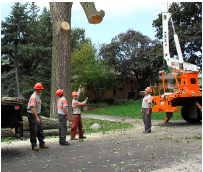A reputable warehouse staffing agency can simplify the hiring process by pinpointing viable candidates for your organization. They do this by maintaining a thorough screening and vetting process that works within the parameters of your hiring processes. For more information, click the Global JC to proceed.
They can also supply temporary workers or temp-to-hire employees for a limited amount of time, which allows them to prove themselves before moving on to full-time jobs. This helps alleviate a significant employment expense for your business.
 Cost-Effective Hiring
Cost-Effective Hiring
The best warehouse staffing agencies have a robust network of sources to find the right workers for temporary and permanent positions. The most reputable companies also maintain clear protocols to screen candidates, verify employment and education, provide a safe work environment, perform drug testing and background checks, and ensure compliance with workplace regulations.
The cost of finding and training new employees can be prohibitive for many businesses. Warehouse staffing agencies offer a more economical solution by connecting employers with experienced, skilled workers. This allows businesses to focus on other areas of their operations, while still providing the extra support needed for seasonal peaks or special projects.
Staffing agencies make it simple for employers to recruit, interview, and hire a new workforce quickly and easily. Their large database of potential applicants and connections with local job seekers means they can source a pool of candidates who are ready to get started immediately. They can also help businesses manage their hiring costs by ensuring they’re paying fair finder’s fees.
Unlike traditional hiring methods, staffing agencies can screen candidates for safety and compliance issues before sending them to a client’s work site. This helps minimize the risk of accidents or injuries on the job. They can also take care of workers’ compensation costs, saving their clients time and money.
Warehouse staffing agencies can scale up and down their workforces quickly to meet their clients’ demands. This flexibility allows them to help their clients deal with seasonal peaks, unexpected demand, and changes in the business climate.
The best warehouse staffing agencies will have a strong focus on building meaningful careers for their workers and have an excellent reputation in the local job market. This will attract quality candidates and create a loyal workforce that is ready to meet the challenges of working in fast-paced warehouses. Their local teams will also be able to get to know their clients better, making them the ideal partner for sourcing talent to support their growth strategy. In addition, they will have a robust candidate database and an efficient process for screening and interviewing.
Flexible Staffing Options
In addition to finding high-quality employees, warehouse staffing agencies are also able to offer companies flexibility when it comes to hiring. This is especially useful for businesses that experience fluctuations in demand for labor.
When a business needs extra help during a busy season or to cover for employees out on sick leave or vacation, they can turn to their warehouse staffing agency to find the temporary workers they need. This can save the company a lot of time and effort that would be spent on finding, interviewing, training, and managing temporary employees.
The best warehouse staffing agencies can quickly find candidates who meet the demands of the position and can get to work right away. They do this by using their extensive networks of workers and conducting thorough vetting and screening processes. They will only provide candidates who have the skills and experience necessary for the job. This saves businesses a lot of time and reduces the risk of bad hires.
Staffing agencies are also able to create and implement effective interview processes. This is because they have the specialized expertise to understand the needs of warehouse positions and can use this knowledge to conduct effective interviews. They can also identify any inefficiencies within a business’s current hiring process and come up with time-saving solutions.
Warehouse staffing agencies can give clients access to a larger pool of employees because they specialize in recruiting for different positions. This allows them to connect with candidates who may not have been found through traditional job sites or other recruitment methods.
Another benefit of working with a warehouse staffing agency is that they can save the business money by reducing their overhead costs. The agency takes care of everything from advertising the position to screening and interviewing candidates. This can save the company a lot of money, particularly in areas like benefits and office space.
Increased Productivity
Staffing agencies have a wide pool of candidates, and they’re able to find employees who meet your needs. Whether you’re looking for a temporary worker to cover an unexpected increase in workload or need a temp-to-perm employee to help with a specific project, they can find someone quickly. Staffing agencies also have the resources and connections to offer temporary workers healthcare benefits. This can be an important consideration if you want to hire temporary workers for a longer stint and need them to have access to healthcare options.
Warehouse staffing agencies have a detailed database of local workers who are qualified and experienced in a range of roles. They can connect you with workers who are ready to take on lower-level positions like pickers or stockers or higher-up roles like warehouse managers and liaisons.
Staffing agency workers are fully vetted, which means they’ve passed background checks and drug tests. This can save you time and money when hiring new employees. Additionally, staffing agencies can quickly replace any workers who don’t work out, saving you the hassle of firing them and searching for replacements.
Moreover, warehouse staffing agencies can fill in gaps in productivity that may be caused by slowdowns during the onboarding process or training. Temporary employees from staffing agencies typically come equipped with experience in fast-paced work settings, allowing them to jump into the work of a distribution center and contribute to productivity immediately.
When you partner with a warehouse staffing agency, they can also take on responsibilities like workers’ comp claims, payroll administration, tax withholdings, and more. This takes a considerable load off your HR and administrative teams.
Having a flexible workforce is crucial to keeping up with shifting market demands and future-proofing your business. A warehouse staffing agency is a great way to do this. With the right staffing agency by your side, you can be more responsive to changing demands, quickly ramp up and down production, and optimize your operational budgets. The best staffing agencies can even identify and future-proof opportunities for your business. They have a thorough understanding of the intricacies of warehouse operations and know how to identify talent pools that can support your company’s growth.
Increased Employee Satisfaction
In addition to providing a steady stream of quality employees, warehouse staffing agencies can also help you improve employee retention by creating a more positive workplace environment. Whether your business faces temporary labor shortages or struggles with high turnover rates, a temp agency can quickly fill gaps in productivity without forcing existing employees to work overtime or letting important tasks slip through the cracks.
Warehousing and distribution centers require workers with specialized physical capabilities and extensive experience. A light industrial staffing agency’s vetting and screening process ensures that the candidates they provide to your organization have the right skills for your specific requirements. This helps reduce training time and the need to hire new employees, saving you both money and headaches.
Temporary workers from a warehouse staffing agency often have prior experience in fast-paced work environments, so they can hit the ground running and begin contributing to your organization’s bottom line immediately. Additionally, most temp agencies offer temp-to-hire services, allowing you to convert these workers into full-time employees if they prove to be a good fit for your company.
Staffing agency software helps streamline the hiring and onboarding processes, reducing errors in scheduling and payroll management. This can be especially beneficial for warehouse and light industrial organizations, which have complex pay structures involving shift swaps and other variables. Using staffing software can help you automate these processes and increase efficiency, so you can focus on growing your business.
Finding and hiring quality warehouse workers is a labor-intensive process that requires time, energy, and resources. Inadequate hires can slow production and affect your bottom line, so it’s essential to take the time to find the best candidate for each job. Fortunately, staffing agencies can save you time and money by searching for qualified candidates and conducting background checks and interviews. In addition, warehouse staffing agencies have a wide range of available candidates, allowing them to meet your needs even in a pinch. This flexibility is critical to ensuring your business stays competitive in the market, even during busy times.






